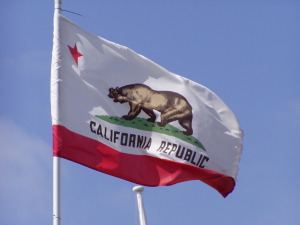 Author: Paul Moore2
Author: Paul Moore2
Introduction
Over the past several decades State Attorneys General have become increasingly involved in merger reviews in tandem with the Federal Trade Commission and/or the U.S. Department of Justice’s Antitrust Division (the Regulatory Agencies). This increase in state merger reviews has been in parallel with states raising their merger and non-merger profile and general antitrust enforcement efforts statewide and nationally. This trend has occurred, in part, as Attorneys General expanded their staffs and have become increasingly experienced in antitrust enforcement efforts and merger analysis. While many states, including California, do not have statutes mandating proposed merger registration, Attorneys General have statutory authority to investigate conduct to ensure no laws have been violated3. This means that an Attorney General can decide to review a proposed merger whenever they think it may violate a state’s antitrust laws. Therefore, it makes sense to notify an Attorney General when a proposed merger may have a competitive impact in a specific state and is likely to trigger an in-depth analysis at the federal level. Some examples might be a merger between two competitors who have substantial overlapping retailing assets, service routes, or service areas in one state. Such a notification to a state allows parties to avoid duplicative and possibly successive investigations. Best practices have emerged around how to conduct a merger investigation with a Regulatory Agency and tandem with the California Attorney General’s office.
Best Practices When Cooperating with Staff
Contacting the federal agency likely to review a transaction before submitting an HSR filing is increasingly becoming part of merger review practice. Since there is no statutory requirement to seek regulatory authority to merge at the state level in California a best practice is to invite the Attorney General to participate in the review process to avoid subsequent investigations that could have been run in parallel with other agencies and possibly avoid efforts by the staff ex-post to unwind a transaction4. Contacting the California Attorney General (Cal-AG) before an HSR is filed is generally well-received by staff and is typically considered a smart strategy because it allows the staff assigned to the transaction the ability to begin reviewing the transaction before the 30-day statutory clock has started. This extra time allows staff more time to conduct a review before any enforcement decisions need to be made and in some cases provides the time necessary to avoid one altogether. In addition, a pre-filing notification to both staffs permits the two agencies to interact freely since there is no HSR confidence to maintain.
We are in an era where many meetings are conducted over video. Generally, saving time and client resources is a good thing; however, visiting a State Attorney General’s staff in their office at the beginning of a merger can pay significant dividends. An in-person visit can establish the foundation for a positive working relationship, allow for clear communications5 and most importantly, communicate to the staff and Attorney General that you are aware of the importance of their involvement and welcome their participation. The in-person visit makes a significant first-step in ensuring that things start off on the right foot.
Once the HSR is submitted, the Cal-AG is able to file her Form 712 and to continue the interagency dialogue with the benefit of the documents and filings the parties have made. The Cal-AG’s staff can also begin to reach out to third parties and seek waivers that permit the FTC/DOJ to share what is produced with the states. This is more efficient for the producing parties as well, as they can make what amounts to a single production to satisfy both reviewing agencies6. Securing these waivers early in the process also allows the staffs to communicate freely, to share economic analyses based on produced information, and for the CAL-AG staff to join party meetings with the FTC/DOJ7. This level of cooperation benefits all involved as it prevents parties from making the same presentation twice and it allows both regulatory agencies to hear the same information simultaneously.
 The Antitrust Attorney Blog
The Antitrust Attorney Blog










